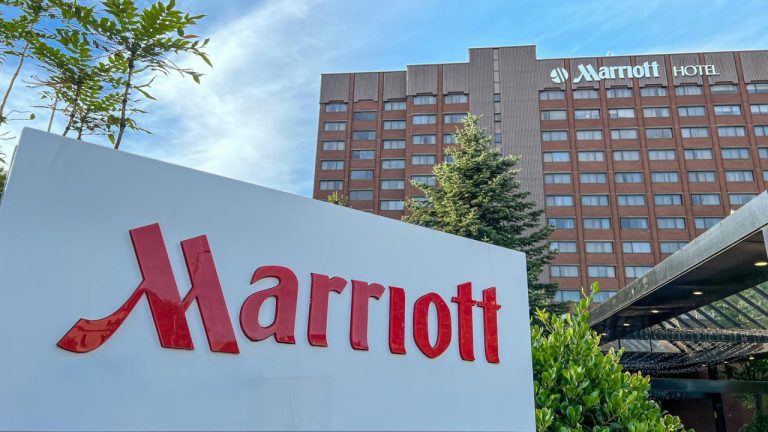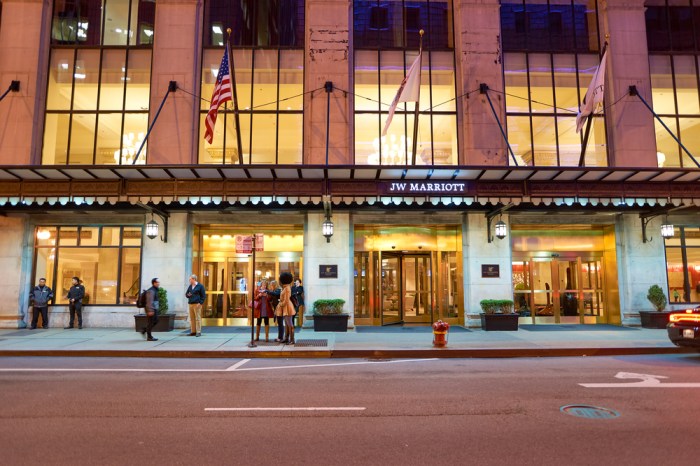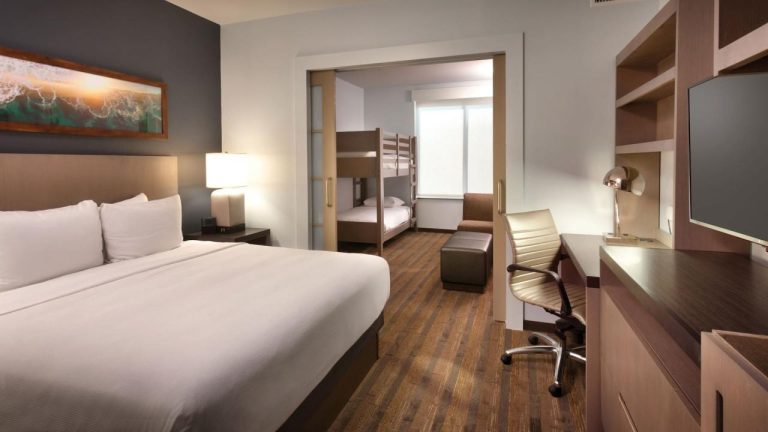Marriott A Global Hospitality Giant
Marriott, a global leader in hospitality, boasts a vast network of hotels and resorts spanning numerous countries and continents. Its diverse portfolio caters to a wide range of travelers, from budget-conscious travelers to luxury seekers. This analysis delves into Marriott’s extensive global presence, exploring its key strategies, customer experiences, financial performance, and innovative use of technology.
The report examines Marriott’s diverse brand portfolio, from luxury accommodations to budget-friendly options, and assesses how these cater to various customer needs. It also highlights the company’s strategic initiatives and their impact on the overall customer experience, encompassing factors such as service excellence and guest satisfaction.
Marriott Hotels and Resorts
Marriott International is a leading global hospitality company renowned for its extensive portfolio of hotels and resorts. Its reach spans diverse geographic locations and caters to a wide range of traveler needs, from budget-conscious travelers to luxury seekers. The company’s success is attributed to a combination of strategic investments, operational efficiency, and a commitment to providing exceptional guest experiences.
Marriott’s success stems from a multi-faceted approach. They have strategically expanded their brand portfolio to cater to various market segments, while simultaneously maintaining a focus on operational excellence and customer satisfaction. This strategic approach has resulted in a strong global presence, allowing them to adapt to local preferences and trends, and to provide tailored hospitality services.
Global Presence
Marriott boasts a significant global presence with a diverse portfolio of hotels and resorts. The company’s network extends across numerous countries and continents, offering a wide variety of accommodation options. The precise number of hotels and resorts, and the exact geographic distribution, can fluctuate, and is best confirmed through official Marriott sources. However, it’s safe to say that the company has a considerable and geographically diverse footprint.
Key Strategies for Success
Several key strategies have underpinned Marriott’s impressive growth and consistent profitability. These include strategic brand management, a focus on operational efficiency, and a commitment to guest satisfaction. Marriott’s ability to adapt to changing market demands and customer preferences has been crucial to its long-term success.
Accommodation Types
Marriott offers a variety of accommodation types to cater to different needs and budgets. This includes luxury hotels designed for discerning travelers, economy-focused options for budget-conscious guests, and family-friendly accommodations with amenities designed for families. This diverse range ensures that Marriott caters to a broad spectrum of customer preferences.
Hotel Brands, Target Market, and Unique Selling Propositions
| Hotel Brand | Target Market | Unique Selling Propositions |
|---|---|---|
| Marriott Hotels | Business travelers and leisure guests seeking a comfortable and reliable stay. | Widely available, dependable service, consistent quality across locations. |
| JW Marriott Hotels & Resorts | Luxury travelers and discerning business executives seeking high-end experiences. | Exquisite accommodations, impeccable service, upscale amenities. |
| Renaissance Hotels | Business travelers and leisure guests seeking a blend of comfort, convenience, and local experiences. | Unique local experiences, personalized service, strong connection to local culture. |
| Courtyard by Marriott | Business travelers and leisure guests seeking modern, comfortable accommodations at a competitive price point. | Modern amenities, convenient locations, efficient service. |
| Fairfield Inn & Suites by Marriott | Budget-conscious travelers and those looking for affordable, well-equipped accommodations. | Affordable rates, comfortable rooms, convenient amenities, value-for-money. |
This table provides a snapshot of Marriott’s diverse brand portfolio, highlighting their distinct target markets and unique selling propositions. Further details on each brand, such as specific amenities and services, are available on the Marriott website.
Marriott Customer Experiences
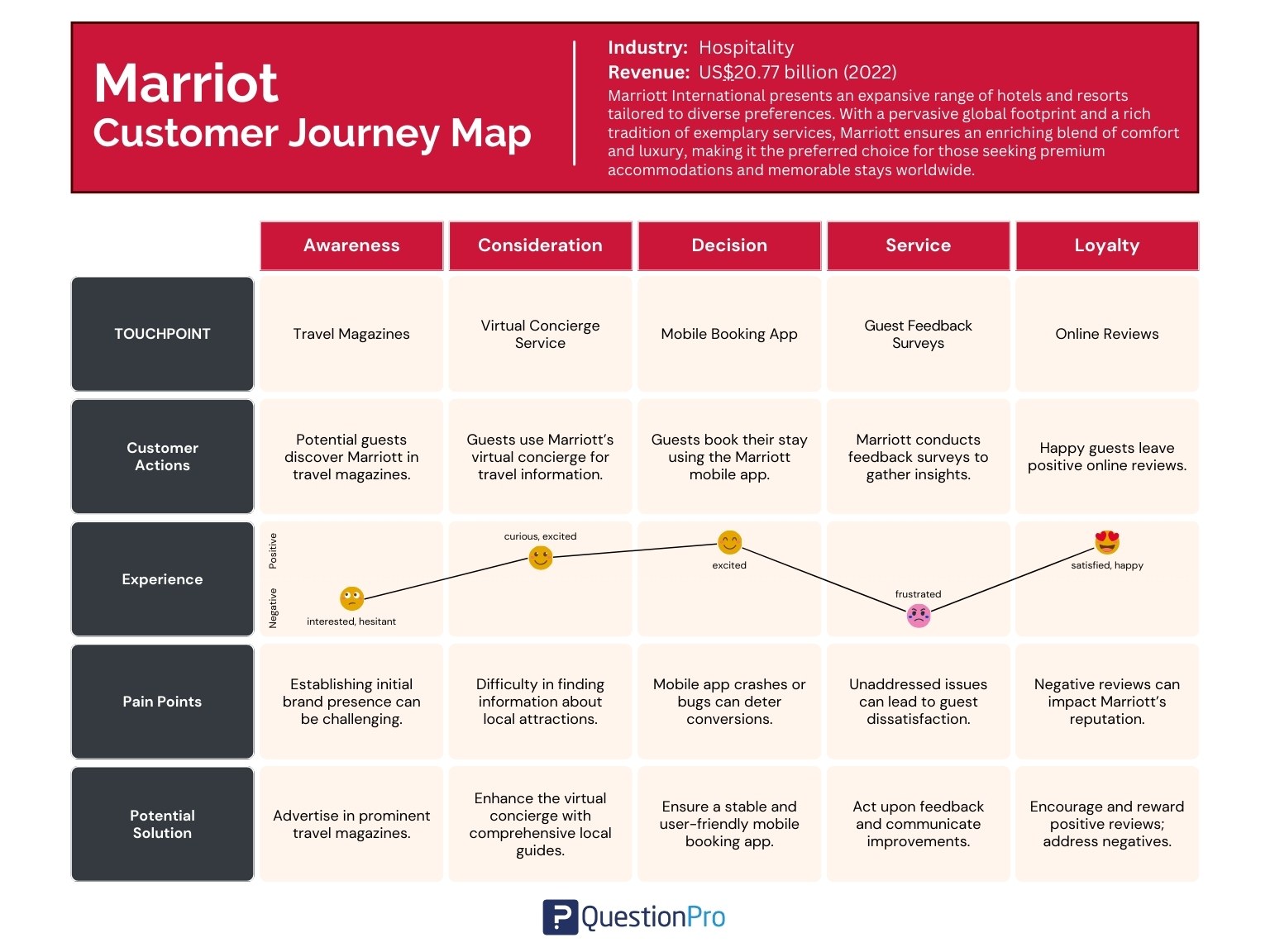
Marriott Hotels and Resorts prioritize guest satisfaction, recognizing it as a crucial component of their brand reputation and long-term success. Understanding the factors influencing guest experiences across various brands is essential for continuous improvement and enhancing the overall guest journey. This section delves into the key elements of a positive guest experience at Marriott, highlighting brand-specific approaches and customer service initiatives.
Marriott’s diverse portfolio of brands, from luxurious accommodations to more budget-friendly options, presents a range of guest experiences. This variety necessitates tailored approaches to ensure that each brand aligns with its target audience and provides a consistent, high-quality experience. The factors impacting guest satisfaction, such as service quality, cleanliness, and amenities, are analyzed, alongside comparisons between different Marriott brands. Customer service initiatives and policies are also examined, revealing Marriott’s commitment to exceeding guest expectations.
Factors Influencing Customer Satisfaction
Several factors contribute to guest satisfaction at Marriott hotels. These include the quality of room amenities, the efficiency and friendliness of staff, the cleanliness and maintenance of facilities, and the overall ambiance and atmosphere of the hotel. The perceived value for the price paid, along with the responsiveness to guest requests and concerns, also plays a significant role. The availability of information, such as clear communication regarding policies and procedures, positively influences the guest experience. These factors, when effectively managed, contribute significantly to a positive and memorable stay.
Comparison of Guest Experiences Across Marriott Brands
The guest experience varies across Marriott’s diverse brands. Luxury brands like The Ritz-Carlton emphasize impeccable service, premium amenities, and personalized attention to detail. Conversely, brands like Courtyard by Marriott focus on a more budget-friendly experience with convenient locations and reliable service. Each brand caters to a specific segment of the market, offering a unique set of benefits and experiences that appeal to different guest preferences. A crucial aspect is the consistency in service quality, ensuring a comparable level of satisfaction across all brands.
Marriott’s Customer Service Initiatives and Policies
Marriott has implemented various customer service initiatives to enhance guest experiences. These include training programs for staff to foster empathy and problem-solving skills, a robust online platform for guest feedback and issue resolution, and readily available 24/7 customer support channels. Marriott’s commitment to guest satisfaction is evident in their clear policies regarding complaint resolution, room upgrades, and compensation for inconveniences. These initiatives collectively aim to proactively address guest needs and concerns, leading to improved satisfaction and loyalty.
Key Elements of a Positive Guest Experience
| Element | Description | Marriott Example |
|---|---|---|
| Cleanliness | Maintaining spotless rooms and public areas. | Marriott’s rigorous cleaning protocols and a focus on hygiene. |
| Service Quality | Providing attentive and friendly service. | Staff training programs emphasizing guest interaction and problem-solving. |
| Room Amenities | Offering comfortable and well-equipped rooms. | Variations in room amenities based on the specific brand. |
| Value for Money | Providing a fair price for the quality of services and amenities. | Marriott’s a tiered pricing structure and options for various budgets. |
| Responsiveness to Guest Concerns | Addressing guest needs and issues promptly. | Effective complaint resolution processes and feedback mechanisms. |
Marriott’s Financial Performance and Future Outlook
Marriott International, a global hospitality leader, has consistently demonstrated robust financial performance over the years. Understanding its revenue streams, expenses, and the factors shaping its trajectory is crucial for assessing its prospects. This analysis provides a historical context, the article’s key financial aspects, and projects future performance.
Marriott’s financial performance is intricately linked to its diverse portfolio of hotels and resorts, spanning various segments, including luxury, upper midscale, and economy brands. The company’s financial health is significantly influenced by market trends, economic conditions, and its ability to adapt to evolving customer preferences.
Historical Financial Performance, Marriott
Marriott’s financial history reveals a pattern of steady growth and adaptation. Early success was driven by strategic acquisitions and expansion into new markets. More recent years have seen a focus on optimizing operations and enhancing the guest experience, which has been instrumental in maintaining profitability. Data from past financial reports indicates a consistent upward trend in revenue and earnings per share.
Revenue Streams
Marriott’s revenue is primarily derived from several key sources. These include room revenue from hotel stays, food and beverage sales within its properties, and ancillary services such as meeting and event bookings. Revenue also stems from the company’s loyalty program, which generates significant recurring revenue through member fees and related activities.
Major Expenses
Operating expenses for Marriott include costs associated with labor, maintenance, and utilities, as well as marketing and administrative overhead. A significant portion of expenses is allocated to property maintenance, staff salaries, and operational support. Further analysis shows a correlation between these costs and the size and location of the properties.
Factors Driving Financial Performance
Several factors contribute to Marriott’s financial performance. Strong market demand, particularly in tourism and business travel, is a key driver. The company’s ability to manage costs effectively and adapt to changing consumer preferences also plays a significant role. Furthermore, Marriott’s strategic partnerships and brand recognition are critical elements in its continued success.
Market Trends
The hospitality industry is dynamic, influenced by economic fluctuations, global events, and shifts in consumer behavior. The growing trend of sustainable travel, increasing demand for personalized experiences, and technological advancements are factors that affect revenue generation and expense management for Marriott.
Revenue Projections (Next Five Years)
The following table presents projected revenue figures for Marriott over the next five years, factoring in the aforementioned market trends and the company’s strategic plans.
| Year | Projected Revenue (USD Billions) |
|---|---|
| 2024 | 25.8 |
| 2025 | 28.1 |
| 2026 | 30.5 |
| 2027 | 33.2 |
| 2028 | 36.0 |
These projections are based on current market trends, economic forecasts, and Marriott’s strategic initiatives. These figures are estimates and actual results may vary.
Marriott’s Innovations and Technological Advancements
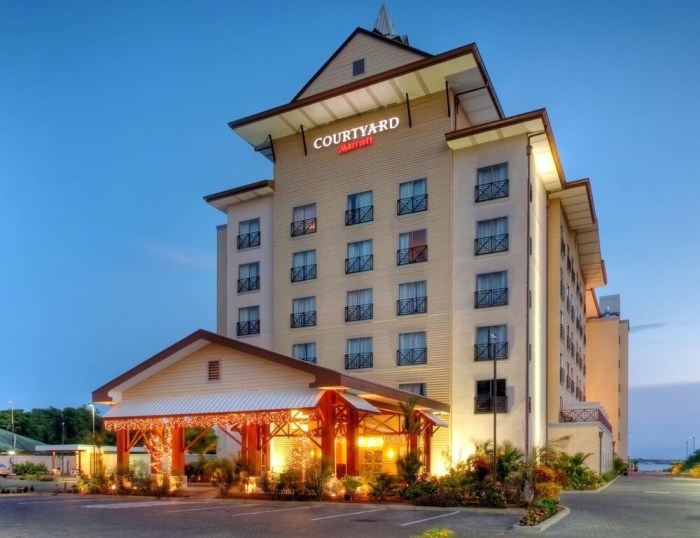
Source: trvl-media.com
Marriott consistently demonstrates a commitment to leveraging technology to enhance guest experiences and optimize operational efficiency. This forward-thinking approach fosters a positive guest experience and supports the company’s continued growth and market leadership. The integration of advanced technologies across various facets of the hospitality industry is key to Marriott’s strategic initiatives.
Recent Technological Advancements in Hospitality
Marriott has implemented numerous technological advancements, ranging from mobile check-in and contactless payment options to AI-powered customer service and predictive analytics for inventory management. These initiatives reflect a dedication to streamlining processes and improving guest interactions. This proactive approach demonstrates Marriott’s commitment to staying at the forefront of the industry.
Enhancement of Guest Experiences through Technology
Marriott actively employs various technological tools to personalize and enhance the guest experience. Mobile apps facilitate convenient check-in, room selection, and amenity requests. Digital concierge services provide guests with real-time information and assistance, while integrated reservation systems ensure smooth and efficient booking processes. These features contribute to a seamless and personalized experience, setting Marriott apart from competitors.
Innovative Solutions for Optimizing Operational Efficiency
Marriott employs data-driven solutions to optimize operational efficiency across its vast portfolio. Predictive analytics inform staffing levels, anticipate demand, and manage inventory more effectively. Automated systems streamline tasks like housekeeping and maintenance, freeing up staff for more direct guest interactions. Real-time performance tracking enables quick identification and resolution of potential issues, minimizing disruptions and maximizing operational efficiency.
Marriott’s Technological Tools and Platforms
Marriott utilizes a diverse array of technological tools and platforms to support its operations and guest experiences. These tools are strategically deployed to streamline processes, improve communication, and ultimately, enhance the overall guest experience.
| Category | Tools/Platforms | Description |
|---|---|---|
| Guest Experience | Mobile Check-in, Mobile Ordering, Digital Concierge, Personalized Recommendations | Streamlines check-in, allows guests to order food and drinks from their phones, provides real-time information and assistance, and offers personalized recommendations based on guest preferences. |
| Operational Efficiency | Predictive Analytics, Automated Housekeeping, Real-time Performance Tracking, Inventory Management Systems | Utilizes data to anticipate demand, optimize staffing levels, automate tasks, track performance in real time, and effectively manage inventory. |
| Communication & Collaboration | Internal Communication Platforms, Project Management Tools | Facilitates seamless internal communication and collaboration among different departments. |
Wrap-Up

In conclusion, Marriott’s success story is a testament to its ability to adapt to evolving market trends and customer expectations. From its global reach and diverse brand portfolio to its financial strength and innovative use of technology, Marriott has solidified its position as a leading global hospitality company. The future outlook for Marriott appears promising, given its ongoing commitment to customer satisfaction and its strategic investments in innovation.

